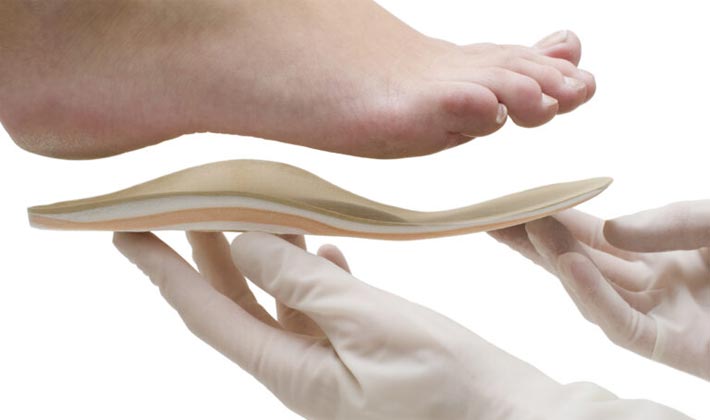Orthotics are a great way to deal with mechanical issues in your feet that may be causing or will cause pain. Without a trained eye, how can you determine if orthotics can be beneficial? Here are some visible and pain signs that may indicate the need for orthotics.

Visible signs
Arch collapse
There are three arches in the foot, but there are two that are more commonly supported with orthotics. The third ends up being supported with an orthotic, but is typically not the main focus.
Collapse of the medial arch, or the arch on the inside of the foot, is the more common reason to wear orthotics. This collapse can occur while standing, or as a low arch with or without standing, which is called pes planus. With this medial arch collapse, it strains structures under the foot, as well as the supporting structures around the ankle, which travel up to the lower leg. The effect can travel higher up the body, because when the medial arch collapses, the lower and upper leg rotate inwards excessively, which strains the knee, hip and back structures. The way you can visibly see this collapse is by looking at this arch while standing. If you cannot place a couple fingers under your arch, this may indicate an arch collapse. Another part of the body to look as is the ankle. With a medial arch collapse, this ankle can be shifted inwards. This ankle shift may not always be present as you can have the collapse without the ankle shift.
The metatarsal arch (arch at the ball of the foot) is another common arch that is supported with orthotics. With this metatarsal arch collapse, it places excessive pressure to the bones at the ball of the foot and the structures surrounding the ball of the foot. A couple signs that may indicate this arch collapse are clawed toes and callusing under the ball of the foot. To visibly see this arch collapse, look at the “pad” at the ball of the foot. If this pad is a straight from one end to the other, or the middle part bulges out further, this can indicate an arch collapse.
High Arch
A high medial arch is the other extreme to the low arch, which can also benefit from orthotics. A high arch can hinder shock absorption and strain the structures on the outside of the foot and lower leg. To visibly see this arch, there are a few signs to look for. There may be a bump on the top of the foot, which can make it hard to fit into shoes. Callusing may be visible under the ball of the foot, only under the outside and inside bones. Also take a look at the shoes, as they may be worn down along the border of the outside of the heel.
Pain Signs
Pain can be another indication that orthotics may be needed. The more common pain areas that can be related to the foot mechanics are the foot, knee, hip, or lower back.
The more common areas of foot pain are at the heel, arch and ball of the foot. Depending on the severity of the pain, it may occur in the morning when you first step out of bed, at the end of the day or while performing a specific activity.
Knee, hip and lower back pain may develop from the feet as the lower and upper leg responds to actions at the foot. Because pain may also be related to other factors higher up, other professionals such as a physiotherapist or chiropractor may be recommended to add to the treatment protocol.
Back pain may also be present due to a leg length discrepancy. When one leg is shorter than the other, the hips are not aligned properly and can affect the lower back. There are different types of a leg length discrepancy, which can both be addressed with an orthotic. Talk to your local Canadian Certified Pedorthist to see if a leg length discrepancy may be present.
If the visible signs are present w
ithout pain, orthotics or an over-the-counter insert may be beneficial to prevent pain in the future.
Book an appointment with your local Canadian Certified Pedorthist to determine how orthotics can help you!
By Julia Hayman, Canadian Certified Pedorthist
